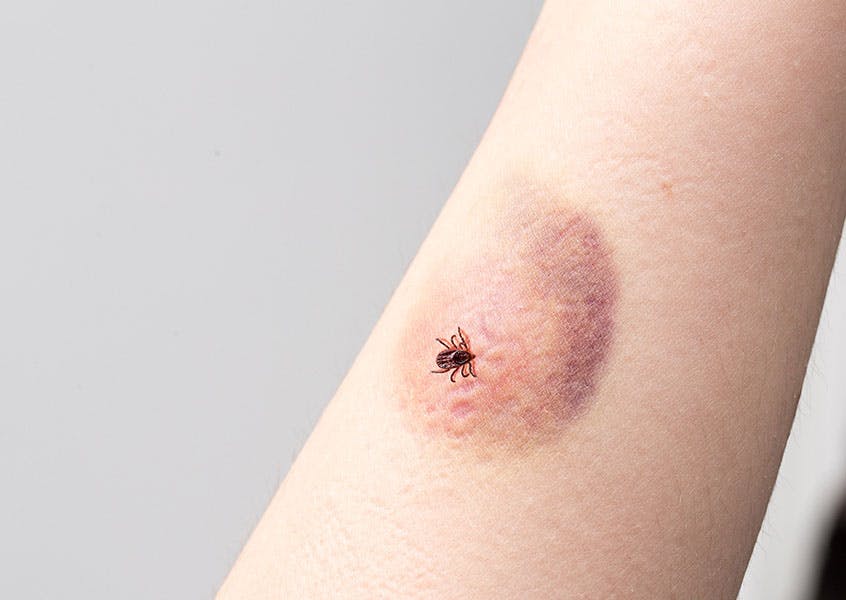Among the respiratory diseases that we have to deal with regularly during the end of the year and the new year, Scrub Typhus is one that often occurs during this popular time for tourism, especially among travelers who go camping and glamping. They should be very careful with this disease caused by lice, mites, ticks and fleas and pay heed to this information which we believe will help people traveling to experience nature do so with peace of mind.
3 types of scrub typhus
Scrub typhus is a disease caused by infection with bacteria in the Rickettsia family that lives in various types of insects such as lice, mites, ticks, fleas. They are vectors that carry this infection to people. This disease is divided into 3 types:
1. Epidemic typhus is carried by lice. The lice are infected by people who have this disease by sucking blood. The pathogen then enters the gastrointestinal tract of the lice. When lice suck blood, they will excrete the germs. When people scratch until they have wounds, the germs will enter the body through their skin.
2. Rat typhus is caused by Rickettsia Typhi that lives in the gastrointestinal tract of rat fleas and cat fleas. It causes disease in animals and passed on to human. In addition, it can also become infected by breathing in the excrement of infected fleas.
3. Bush typhus has chigger as carrier, so it is also known as chigger-borne typhus in which pathogens live in the gastrointestinal tract of the mites in the stage of chigger or red mites which can live on rodents such as squirrels and chipmunks. Chigger will suck the blood of these animals as food. Sometimes the mites that live in leaves and grass can come to humans and suck their blood as food.
Symptoms of scrub typhus
10-12 days after a person is infected with a blood-sucking disease carrier, they may start to experience symptoms such as high fever, chills, headache, and muscle pain, body ache, eye pain, red eyes, nausea, vomiting, dry cough, and swollen lymph nodes. The bite wound will gradually bulge or enlarge and looks like eschar but there will be no pain or itching. In some patients, it may disappear on its own. However, in case of complications, it will cause danger to the point of death due to pneumonia meningitis and encephalitis or organ failure and bleeding.
Diagnosis and treatment
Those who suspect they may have scrub typhus because of symptoms that indicate a possible infection or traveling from an outbreak area, it is advisable to observe their own symptoms first. If the symptoms are similar to those described above, they should go to the hospital for a thorough diagnosis by a doctor through serological test, Complement-Fixation test, Indirect Immunofluorescence Antibody (IFA), and Polymerase Chain Reaction (PCR).
For treatment, antibiotics that are qualified to treat bacterial infections, such as doxycycline, will be used. Chloramphenicol will be used in patients with severe symptoms. Both drugs are not suitable for pregnant women because they can contaminate breast milk during lactation and affect the baby. Therefore, for pregnant patients, doctors will choose azithromycin and strictly control the amount of medication. In addition, azithromycin is also used in patients who have become resistant to drugs such as doxycycline and chloramphenicol.
Scrub typhus may be a disease that easily causes severe complications which can lead to death. However, we can all prevent this disease. When going to an area that is at risk of scrub typhus, such as going for a hike or going to an area full of trees or grass, we should wear clothes that fully cover the skin as much as possible. In addition, you should protect your skin with products that contain DEET (N, N-Diethyl-meta-toluamide), which is commonly used in insect repellents, or herbs that can repel insects.
However, in case of children, they should be careful not to get it into the eyes as it will irritate the eyes. They should use a hand spray and gradually apply to the body or face of children. In addition, baby stroller cover and mosquito net should be used to reduce the risk. More importantly, you should clean your body and wash your clothes thoroughly with high concentration detergent after going for a hike or going to a place with a lot of trees.
For Krungthai-AXA Life Insurance customers, you can consult a doctor online with Krungthai-AXA Telehealth service. Just download Emma by AXA application and press the “TeleHealth” button to confirm your policy number for the first time you use it. For more details, click: https://www.krungthai-axa.co.th/th/health-services/telehealth.
References
· Siriraj Piyamaharajkarun Hospital
https://www.siphhospital.com/th/news/article/share/scrub-typhus
· Department of Disease Control, Ministry of Public Health
http://bit.ly/3gND08K
· Pobpad website
http://bit.ly/3VAc9Mu
https://www.pobpad.com/doxycycline
https://www.pobpad.com/chloramphenicol


